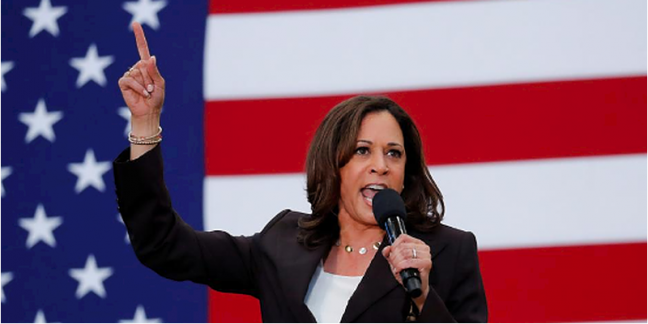
Kamala Harris played a crucial role as Biden’s running mate during the 2019 presidential campaign. Her roles as Attorney General and Senator of California gave her the political experience necessary to deal with her Republican counterparts. As the first woman of color to appear on a major-party ticket, she connected with women and minority voters. Plus, her effective use of social media raised millions in campaign funds. But as Vice President, many have questioned her first year in office. As the 2022 midterm elections approach, Kamala Harris has entered the campaign race with a visit to Wisconsin. We examine if her return to the forefront could boost the Democrat’s political betting odds of maintaining power in Washington.
The Campaign Trail
Wisconsin is one of many midterm election battleground states that could have national implications for both the Republican and Democratic parties. In the presidential election, Biden won the state by fewer than 21,000 votes (0.6%). Milwaukee, the largest city, is a Democratic stronghold, but Wisconsin is known for its close-fought elections.
On November 8, 2022, voters will cast a ballot for governor, one U.S. senator, eight congressional seats, 17 seats in the Wisconsin state Senate and 99 seats in the state Assembly, and the state’s executive and administrative offices.
The incumbent Democratic Governor Tony Evers and Republican Senator Ron Johnson, a hardline Trump supporter, are running for re-election. Democrats are positive about beating Johnson in a November contest and believe that investing time and money in the state will affect both the 2022 and 2024 elections.
At a news conference on January 19, to mark his first year in office, President Biden sent out the message, “go out and make the case in plain, simple language as to what it is we have done, what we want to do and why we think it’s important.” In response, on January 24, Kamala Harris hit the campaign trail to explain how the administration’s agenda had benefited Wisconsin.
Infrastructure Bill
In November, President Biden signed a $1.2 trillion infrastructure bill that will upgrade and repair America’s aging infrastructure, including transportation networks, the nation’s broadband, energy, and water systems. As a direct result of this initiative, Kamala Harris stated that it had already benefited the people of Milwaukee. A $48 million federal investment has replaced lead pipes to provide safe drinking water. This problem disproportionately affected Black city residents who were more likely to vote Democrat.
Republican Senator Ron Johnson voted against the bipartisan infrastructure bill, even though it would improve Wisconsinites’ everyday lives and create good jobs.
Similar projects will benefit other battleground states. Georgia, a vital logistics hub for the country, will receive billions of dollars for transportation, weatherize homes and address flooding in coastal areas. In this midterm year, political bettors need will to assess if Joe Biden, Kamala Harris, and the Democrats are effectively communicating to voters the benefit of their policies and the impact that may have on the election odds.
Fund Raising
Kamala Harris’ fundraising success is an asset to the Democratic National Committee. With over 40 million followers across multiple social media platforms, she gives the Party great exposure. Fundraising emails sent out in her name raise more cash than other Democratic Party members, except for Biden. The Democratic Party campaign committee has already raised record funds of $176 million to fight Republicans in the battleground states. The question for bettors is: will Harris’ appearance encourage Democratic donors to step forward and improve the odds of them maintaining control of the Senate in 2022?
Minority Votes
Biden’s support within Black communities has dropped from 83% in April to 64%. Across America, many minority voters feel disaffected or taken for granted by the Democratic party and by Republican legislature that creates hurdles to voting, keeping people of color away from the ballot box.
The Democratic Party hopes that Kamala Harris’ presence on the campaign trail will energize non-white, female, and the young to vote, which is crucial for a midterm election victory, especially in swing states such as Wisconsin.
Historical trends suggest that Republicans should have an edge in the midterm elections, and Democrats say a strong turnout will be essential for the party to keep power.
Voting Reforms
Voting rights have been at the forefront of the Vice President’s agenda. The Freedom to Vote Act, and the John Lewis Voting Rights Advancement Act, are being stalled by Republican senators, and Republican anti-voter laws could make it more difficult for as many as 55 million Americans to vote.
Harris and the Democratic National Committee have promised resources to help voters in states like Wisconsin. The I Will Vote campaign will counter Republican efforts to make voting more difficult. $25 million will be invested in voter education, voter protection, targeted voter registration, and technology to make voting more accessible.
Kamala Harris’ role as the tie-breaking vote in an evenly divided US Senate has restricted her ability to travel in her first year in office, but as the midterm election campaigns become a priority, she will play a significant role in campaigning across the states, pushing for voter participation and highlighting the Biden administration’s achievements. If in November the midterm campaign proves to be successful, it will solidify Kamala Harris’ profile and potentially make her the political bettor favorite to be the Democratic nominee after Biden
Wager on the midterm elections at top online sportsbooks.